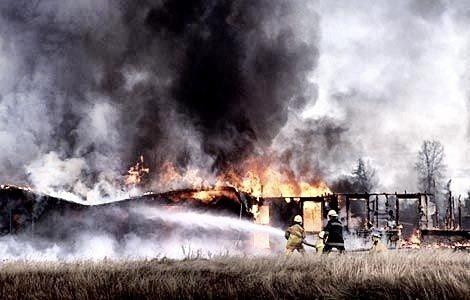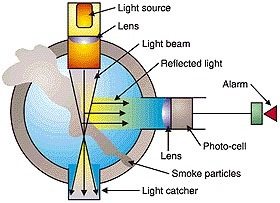One of my pass time shows is Dateline. I absolutely love every story they do even those that wouldn’t normally peek my interest. This past weekend was the most life changing one. It was the story about fire alarms.
They started the show off with a tragic story of a mother whose home caught on fire and she hadn’t known until awhile later when the home was already in flames and covered in black smoke. Due to the fire alarms going off late there was no way for her to go upstairs and get her four kids and they all ended up dying. This was a family who routinely tested the fire alarm and did fire drills.
Dateline showed the test by Rossen Reports of four popular smoke alarms most Americans have and put it up against one another. The fire department had left some heating tool on the couch and it began to catch fire. Smoke soon followed and black smoke soon covered the room. You would think that the instant there was a whiff of smoke the alarms would go off, but it didn’t. It wasn’t until about 36 minutes that one alarm went off and the other three followed about two minutes after. Shocking to think that we really aren’t safe at all.
There are two types if smoke alarms; Ionization and photoelectric. The difference is–
Ionization smoke detection is generally more responsive to flaming fires.
How they work: Ionization-type smoke alarms have a small amount of radioactive material between two electrically charged plates, which ionizes the air and causes current to flow between the plates. When smoke enters the chamber, it disrupts the flow of ions, thus reducing the flow of current and activating the alarm.
Photoelectric smoke detection is generally more responsive to fires that begin with a long period of smoldering (called “smoldering fires”).
How they work: Photoelectric-type alarms aim a light source into a sensing chamber at an angle away from the sensor. Smoke enters the chamber, reflecting light onto the light sensor; triggering the alarm.
Most of us have the ionization alarm in our homes because we don’t know any better. Studies are still ongoing so there is no immediate need to have NFPA change their standards.
Dateline also ran another test including the noise these fire alarms make– you know that sharp pitching beeping sound that gets you running like crazy to the smoke alarm when your cooking sets it off. The first test was given to four different children under the age of 12 and once they were fast asleep the alarm went off. The alarm went off and none of the children woke up. One girl appeared to be up, but the sound didn’t faze her at all– they all slept through the sound. Reason being is that children spend more time in deep sleep than adults so its harder to get them up.
The next test that was performed was having a talking alarm, but not the generic one you hear ” fire, fire.” Instead it was the voice of each child’s mother saying something like, “Ziana, Ziana wake up now!” Again, they waited until all children fell asleep and tested that alarm out. And guess what happened? All the children woke up scared and panicked. They’re not sure whether it was their parents voice that woke them up or a voice in general.
I think what’s also a huge mistake many of us do, myself included, is that when the alarm goes off for any and every little thing we take the batteries out or hide the alarm in a draw. We often leave them out and don’t plug them back in.
Smoldering fires are what cost more people lives and the photoelectric fire alarms are definitely better. So why not buy them? They do have a dual fire alarm which has both the photoelectric and ionization put together which is good. They aren’t too expensive either, it’s about $20. Something worth investing in, you’ll have the ionization detection for sudden, low smoke flames, and photoelectric sensors for smokey, slow-burning fires. I would also suggest having fire drills in your family a few times a year.
I found the video Dateline used from the Rossen Reports, including the tests and the family that lost four children. Please watch and take note–
[youtube]http://youtu.be/EMJEzfMgdV4[/youtube]







1 Comment
The Silent Killer: Carbon Monoxide | betsy-v.com
Apr 18, 2013 at 3:56 pm[…] Read my other post regarding your smoke alarm– “Your Smoke Alarm May Not Save You” […]